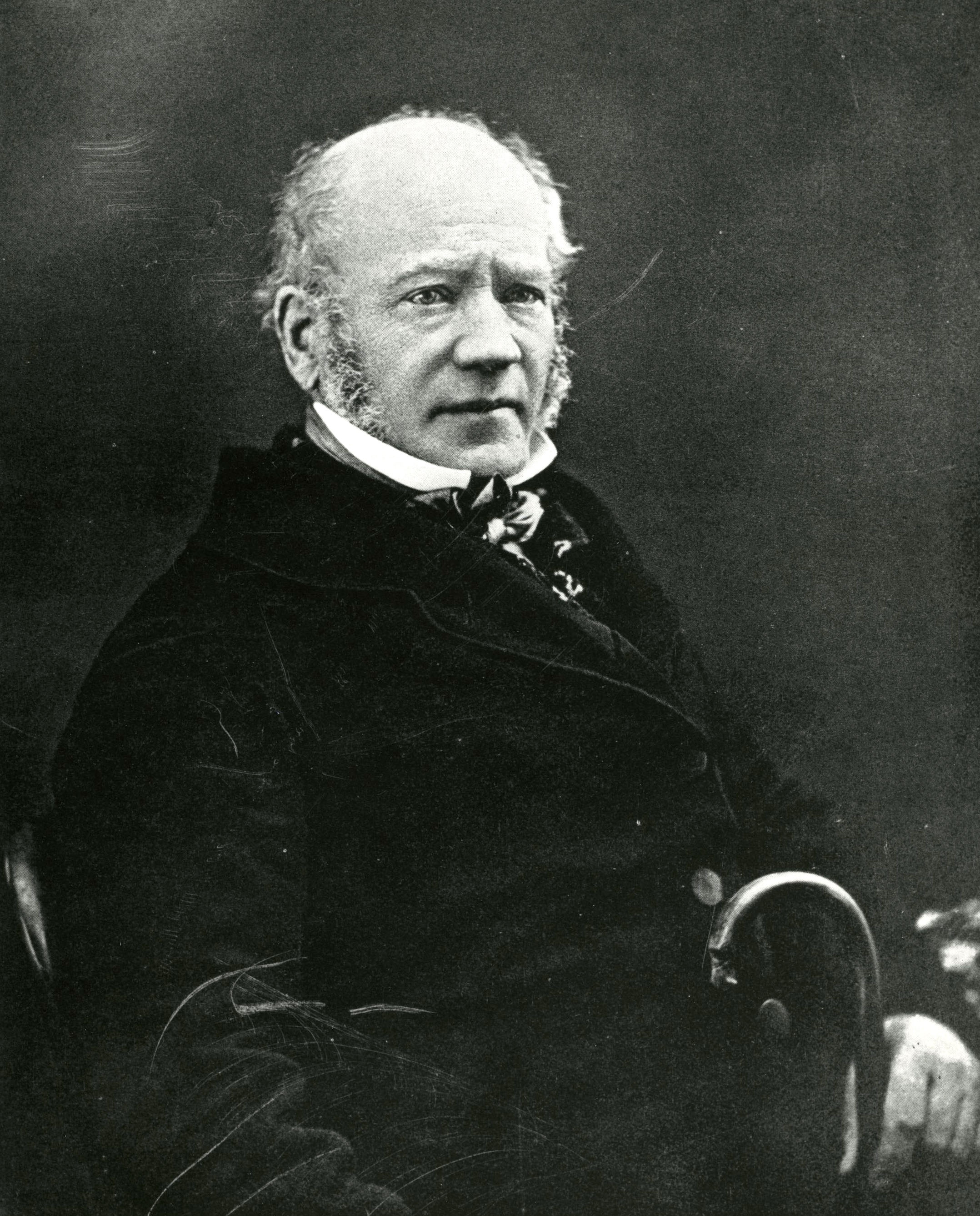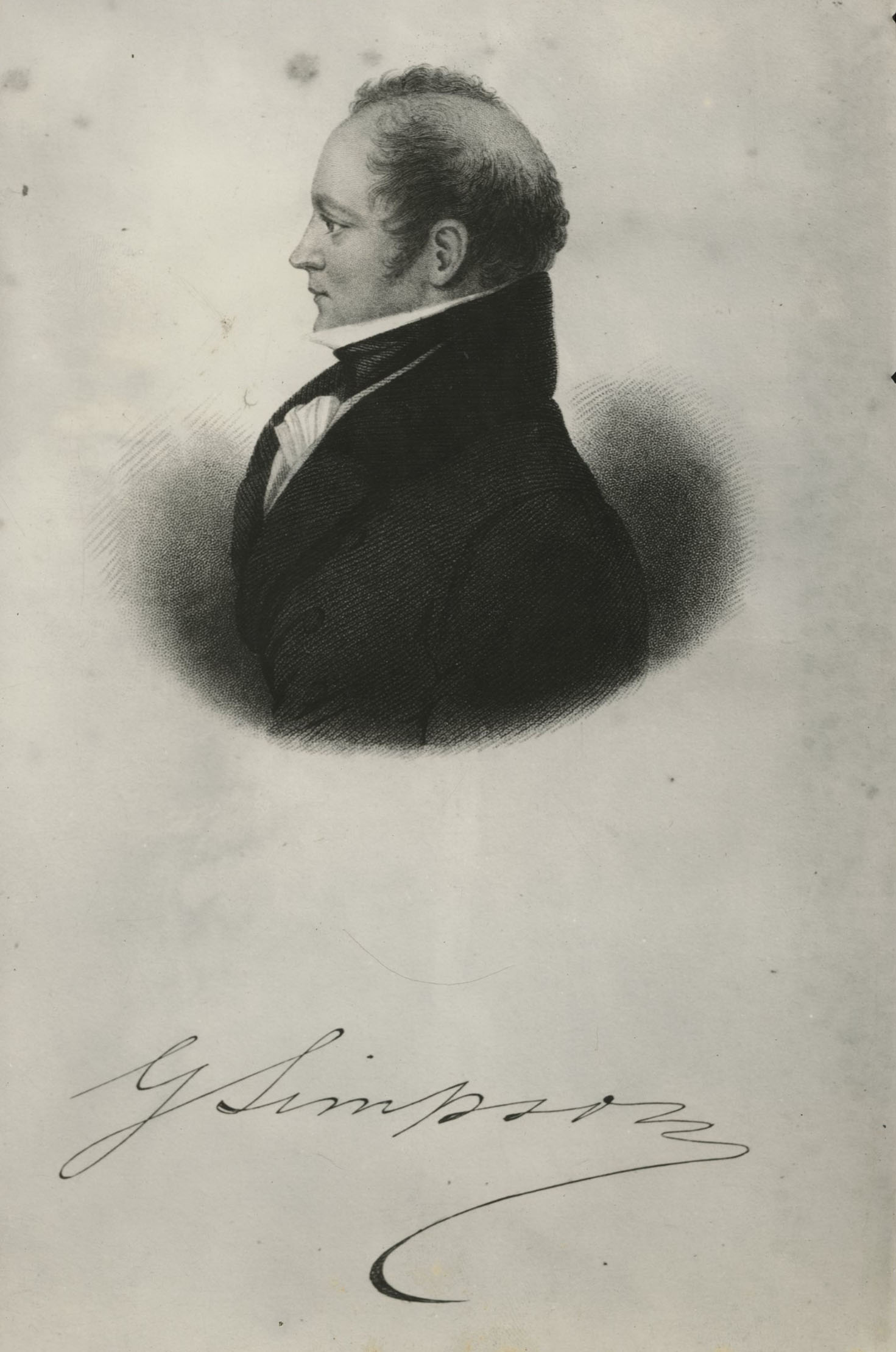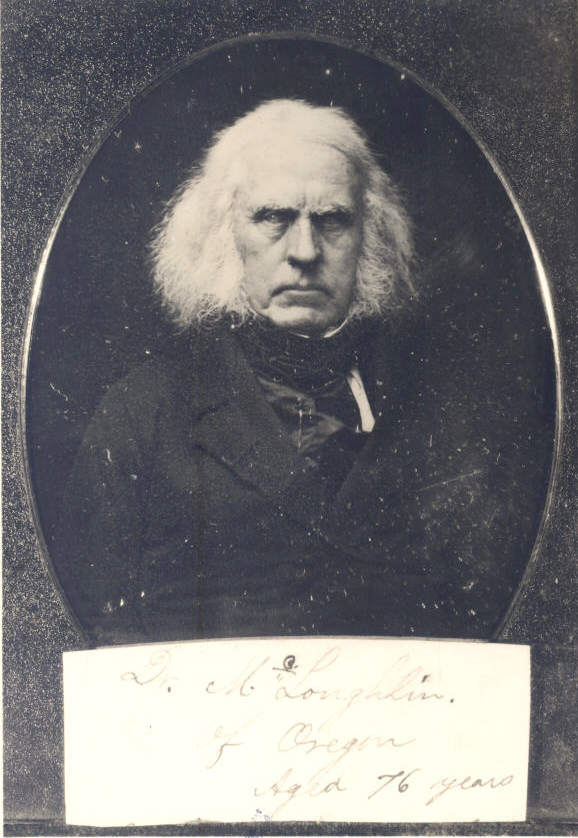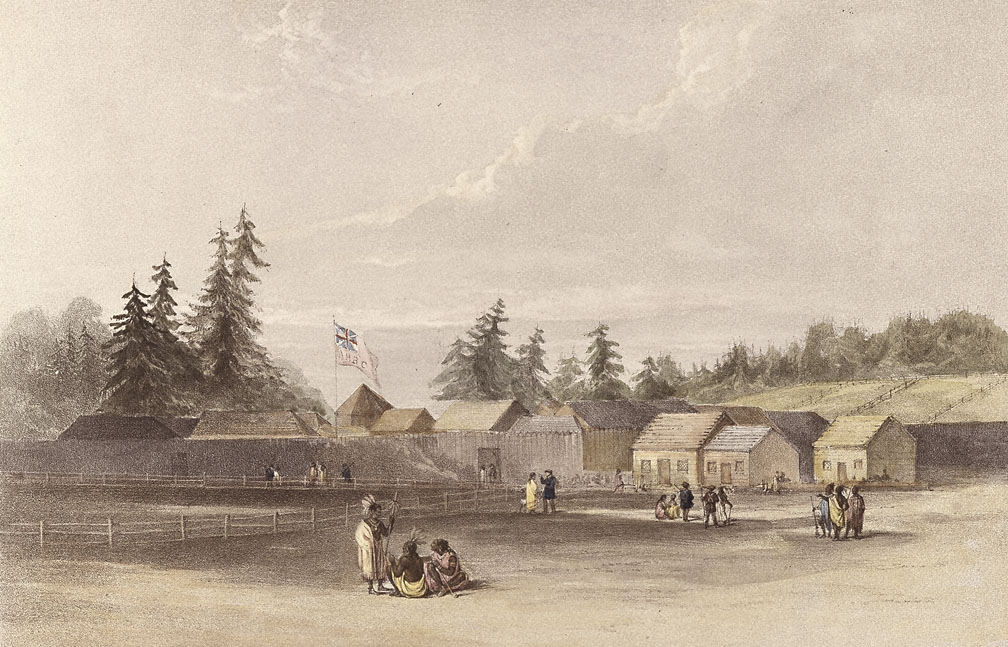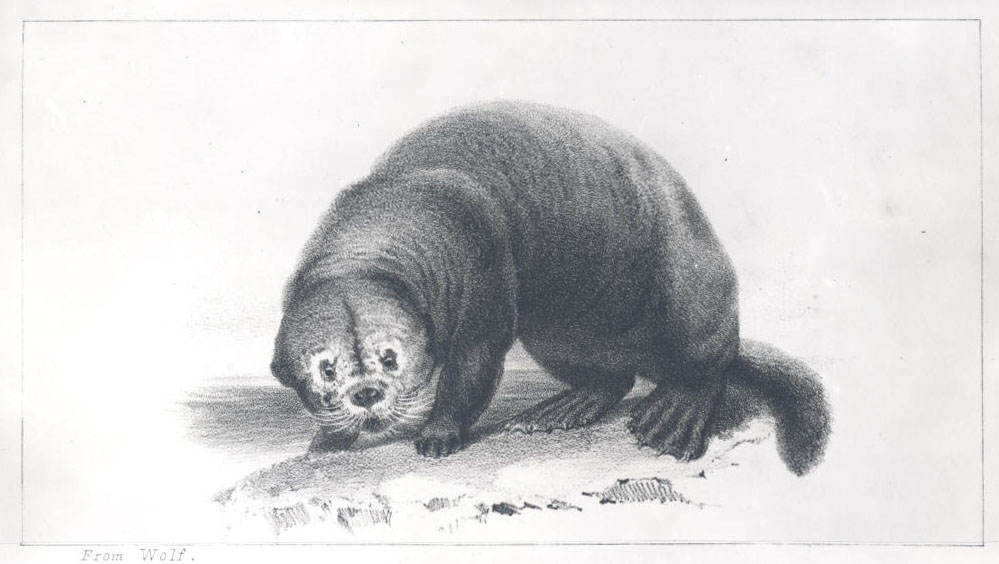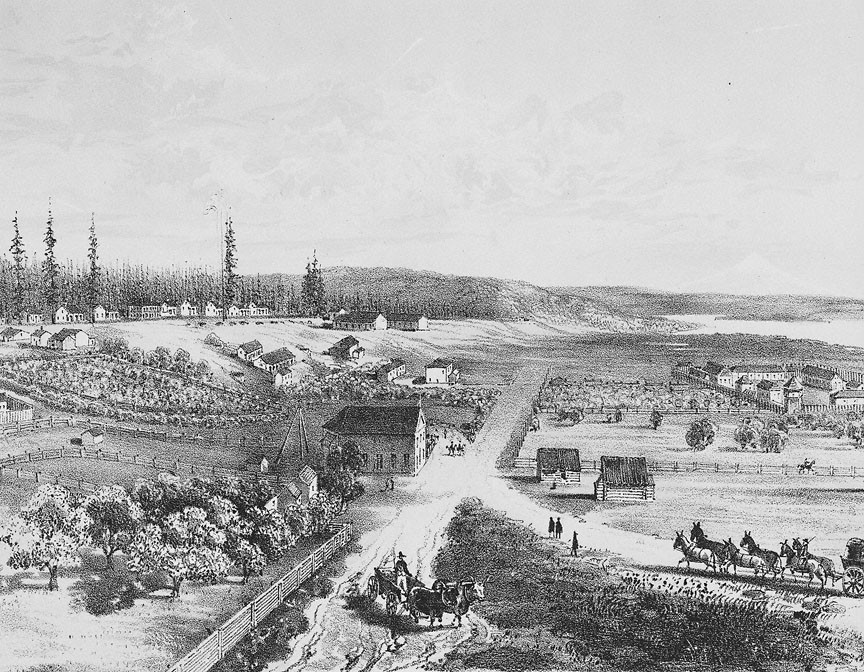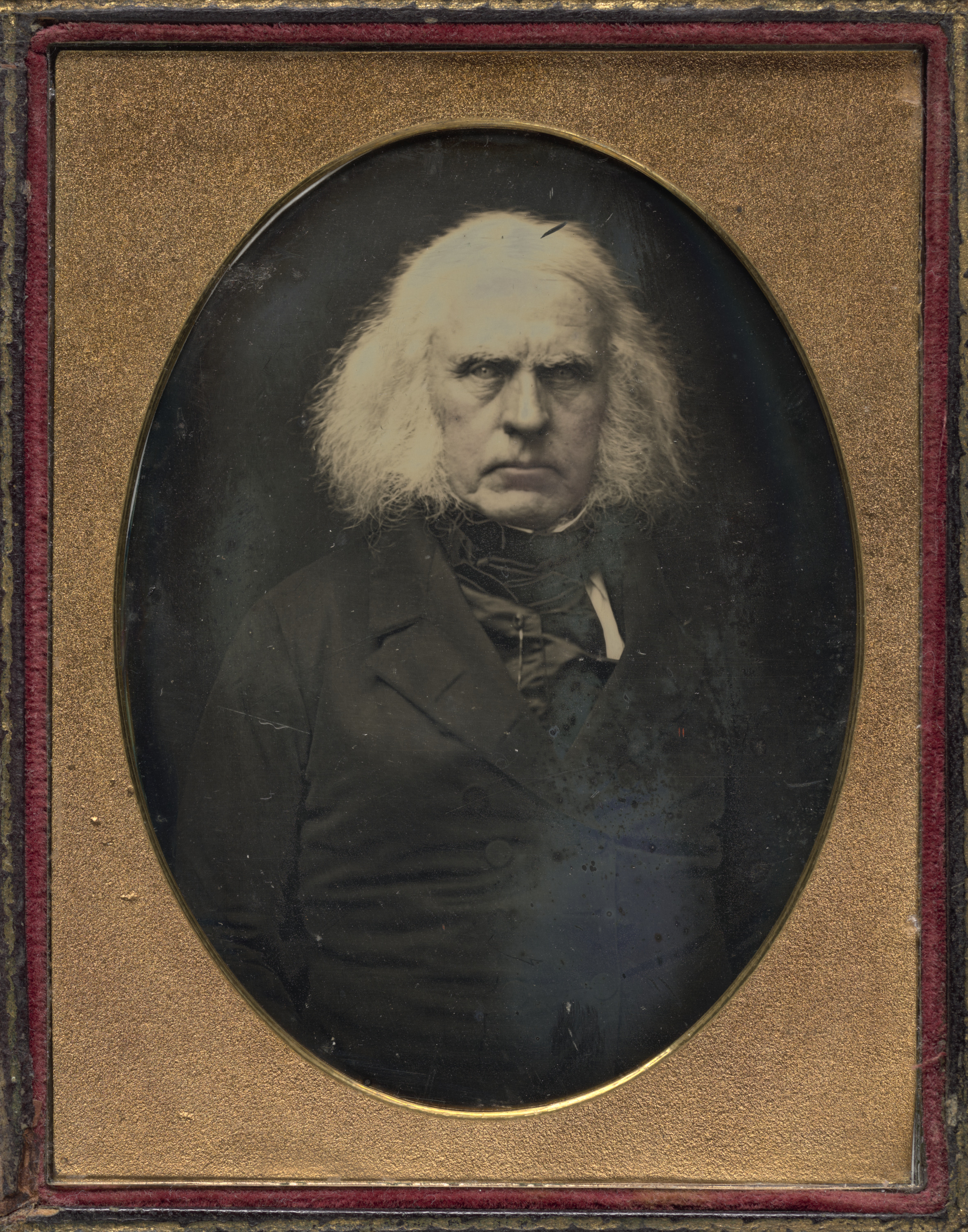The highest-ranking officer of the Hudson's Bay Company in North America, Sir George Simpson, was a talented administrative martinet who was indefatigable, ambitious, and revenue-driven. He effected the continental reorganization of the fur trade and its associated commerce following the merger of the Hudson’s Bay Company (HBC) and the North West Company in 1821. Through his initial visit to the Oregon Country in 1824, when he reached the company's headquarters at Fort George (formerly Fort Astoria), Simpson recognized the potential for the Columbia Department to turn a profit and spent the next two decades economizing and diversifying former North West Company holdings in the Oregon Country.
Born in northern Scotland in 1786 or 1787 to unwed parents from different social classes, the diminutive, blue-eyed, redhead honed a knowledge of working-class Gaelic and an "exterior of affability" that would later, in his work with subordinate fur trade employees, smooth the edges of his exacting demeanor. Work with his uncle Geddes Mackenzie Simpson at his company Graham and Simpson (London) connected him with Andrew Colvile, a board member for the Hudson’s Bay Company. In 1820, George Simpson was appointed HBC's acting governor-in-chief in North America.
When the North West Company merged with HBC in 1821, Simpson was named governor of HBC's Northern Department. He reduced expenses, personnel, and facilities east of the Rocky Mountains before focusing in 1824 on what he viewed as an underperforming Columbia District, which included present-day Oregon, Washington, and portions of Idaho, Montana, and British Columbia. Reviewing North West Company accounts, Simpson found "mismanagement and extravagence" exemplified by "prodigious expences" for items such as imported luxury items and food. "Everything appears to me on the Columbia,” he noted at the time, “on too extended a scale except the Trade." Travel marked Simpson's early years as governor; he visited the Oregon Country three times—in 1824-1825, 1828-1829, and 1841-1842.
Simpson first arrived at Fort George in 1824, accompanied by newly appointed Chief Factor John McLoughlin and eager to initiate the company's plan to expand the fur trade up the Northwest Coast. He wanted to "get as much out of the Snake Country as possible for the next few years" and make the Columbia posts self-supporting. To that end, he established a headquarters at the confluence of the Columbia and Willamette Rivers to replace Fort George, naming the new post Fort Vancouver (after Capt. George Vancouver) at its dedication in 1825.
Agriculture and industry, including the export of timber and salted salmon, factored into Simpson's vision for a profitable Columbia Department, and he gave McLoughlin detailed instructions on how to move forward. "The timber trade promises to become a valuable branch of business," he wrote on his visit to Fort Vancouver in 1829, when he directed McLoughlin to relocate the company's sawmill to the Willamette Falls, increase the yield from company farmland, and expand the company's cattle herd.
The Hudson’s Bay Company was intent on supporting missionary initiatives among North American tribes in the 1820s, and Simpson met with numerous Native leaders on his initial visit to assess their receptiveness to Christianity—while duly noting the profit religious conversion could bring. He personally recruited and sent to the mission school at the Red River settlement two boys—Slough-Keetcha, a Spokane (called Spokane Garry), and a Kootenai called Kootenai Pelly—launching attempts at educating and Christianizing Indigenous youth in the Oregon Country.
Simpson's visit to Oregon in 1842, following his knighthood for assisting a 1841 exploration of the Arctic, resulted in a divide with McLoughlin that the two never resolved. McLoughlin objected strongly to Simpson's dictate to close coastal forts and reorganize the coastal trade around the steamer Beaver, believing the forts more effective and less expensive. He also objected to Simpson's direction to relocate the department headquarters and depot to Fort Victoria on Vancouver Island. McLoughlin viewed Simpson's inquest into the murder of his son, John McLoughlin Jr., at Fort Stikine in 1842, as insincere and perfunctory, and he held Simpson responsible for his death. Simpson eventually lost confidence in McLoughlin and, ever seeking advantage, leveraged his obsessive focus to force his retirement from the HBC in 1845.
In 1841 and 1844, Simpson encouraged emigration parties to Oregon from the HBC's Red River settlements. Though each party garnered fewer than 150 members, some overlanders later broke their HBC ties and supported formation of the U.S. Oregon Territory. Simpson played an early role in the decades-long negotiations between Britain and the United States for HBC’s recompense resulting from the Oregon Treaty, but that effort ended with his death in 1860 in Lower Canada.
-
![]()
George Simpson.
Courtesy Oregon Hist. Soc. Research Lib., 10125, photo file 972
-
![]()
Sir George Simpson on an inspection trip.
Courtesy Oregon Hist. Soc. Research Lib., Orhi 90421, OHQ 95.1
-
![]()
Sir George Simpson, from his Narrative.
Courtesy Oregon Hist. Soc. Research Lib., Mss 48, neg#54480, photo file 972
-
![Sketch by H.J. Warre]()
Fort Vancouver, 1848.
Sketch by H.J. Warre Courtesy Oreg. Hist. Soc. Research Library, OrHi83437
-
![]()
Dr. John McLoughlin.
Courtesy Oregon Hist. Soc. Research Lib., 248
Related Entries
-
![Fort George (Fort Astoria)]()
Fort George (Fort Astoria)
Fort George was the British name for Fort Astoria, the fur post establi…
-
![Fort Vancouver]()
Fort Vancouver
Fort Vancouver, a British fur trading post built in 1824 to optimize th…
-
![Fur Trade in Oregon Country]()
Fur Trade in Oregon Country
The fur trade was the earliest and longest-enduring economic enterprise…
-
![Hudson's Bay Company]()
Hudson's Bay Company
Although a late arrival to the Oregon Country fur trade, for nearly two…
-
![John McLoughlin (1784-1857)]()
John McLoughlin (1784-1857)
One of the most powerful and polarizing people in Oregon history, John …
-
![North West Company]()
North West Company
First organized in 1779 by a small group of Canadian fur traders based …
Related Historical Records
Map This on the Oregon History WayFinder
The Oregon History Wayfinder is an interactive map that identifies significant places, people, and events in Oregon history.
Further Reading
Galbraith, John S. The Little Emperor: Governor Simpson of the Hudson's Bay Company. Toronto, Ontario: Macmillan, 1976.
Gibson, James R. Farming the Frontier: The Agricultural Opening of the Oregon Country, 1786-1846. Seattle: University of Washington Press, 1985.
Hussey, John A. The History of Fort Vancouver and its Physical Structure. Tacoma: Washington State Historical Society, 1957.
Lent, D. Geneva. West of the Mountains: James Sinclair and the Hudson's Bay Company. Seattle: University of Washington Press, 1963.
Mackie, Richard Somerset. Trading Beyond the Mountains: The British Fur Trade on the Pacific, 1793-1843. Vancouver: University of British Columbia Press, 1997.
Merk, Frederick, ed. Fur Trade and Empire: George Simpson's Journal. Cambridge, Mass.: Harvard University Press, 1931.

